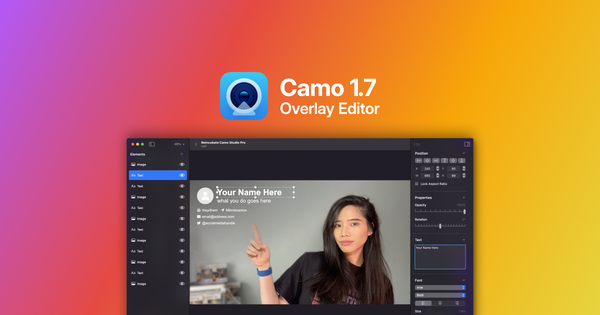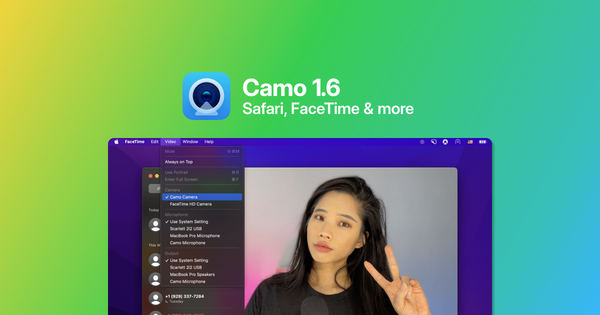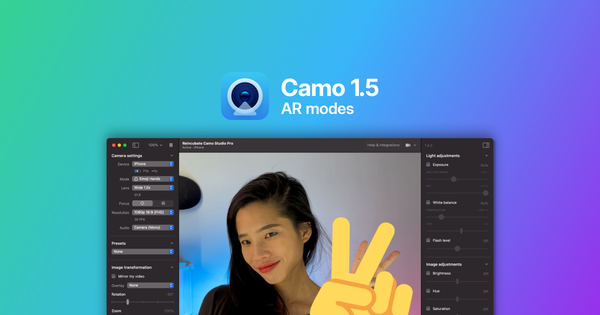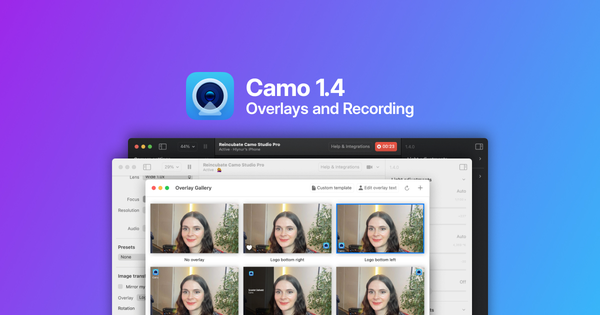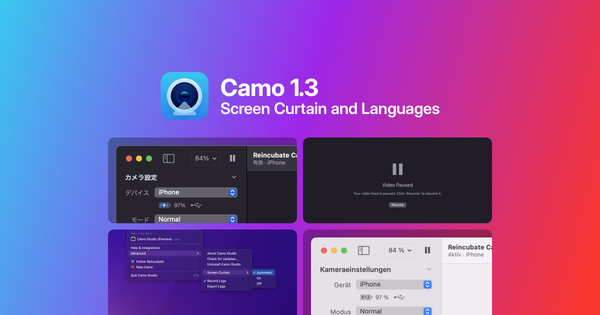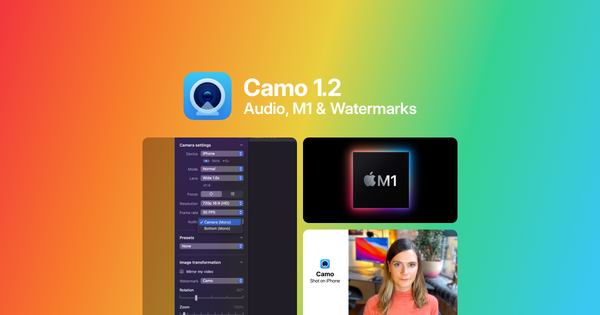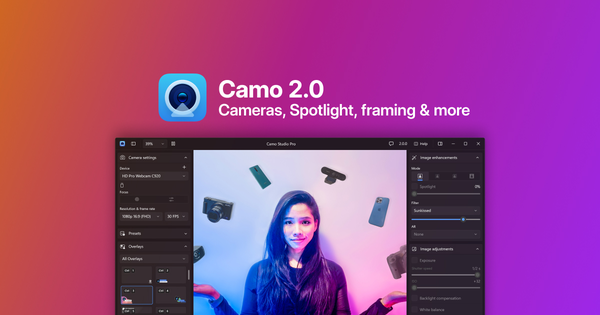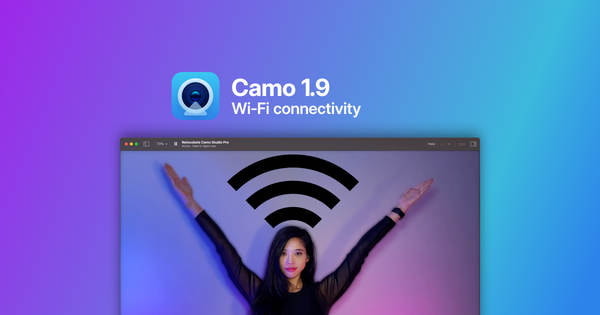Introducing Camo 1.1: Bokehback mountain
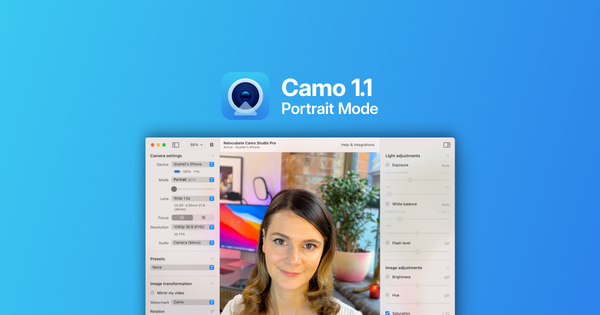
We built Camo to improve the quality of our internal calls when it was no longer possible to see each other face-to-face. Three months on from the public release of Camo Studio, and we’ve been blown away by positive feedback from users. We anticipated that Camo might be used by other companies with similar needs to us, but we didn’t expect to be building a product that would let med students observe live dissections, musicians stream gigs remotely, and help deaf people stay involved in conversations by giving online sign language translators a fast, crisp video for calls.
My work PC doesn't have a webcam (it's a tower). While shopping webcams I discovered Camo, which lets me use my already great iPhone 7+ camera as my webcam for virtual meetings. It's been fantastic. Thanks @reincubate! Looking forward to whatever's next! #CamoGiveaway #webcamtoy pic.twitter.com/shY6z2w3iZ
— Andrew Rothman (@arothman) October 26, 2021
The span of use-cases has been a joy to see, but it also emphasises the impact of just how much better live online video can be when we move away from legacy webcams. We’ve got so much more to crack on with that will put Camo even further ahead, following the roadmap we set out in our launch post. Today, we’re excited to be sharing some of these new features with you, with the release of Camo 1.1.
Focused video with Portrait Mode
We’ve long loved the iPhone’s “Portrait mode”, which adds a beautiful bokeh blur effect to photos. Apple’s functionality stops there, however, and as of iOS 14 it’s not possible to add this depth of field effect to video from the iPhone or iPad.
Releasing Camo has involved us shipping a range of difficult and innovative technical features, and 1.1 brings something that fits into both categories: Portrait Mode for video, adjustable and made easy with Camo.
You can now use Portrait Mode to give your background a bokeh-effect blur. Inspired by the background blur created when using certain lenses with DSLR cameras, but without the hassle, expense and unreliability of running a DSLR as a webcam. Portrait Mode has a built in slider, so you can adjust the strength of the background blur to suit your needs.
Using Portrait Mode can improve your video by creating a higher quality image, reducing the distraction of the background (while avoiding the need for corny virtual backgrounds), and keeping the focus on you. Portrait Mode is an excellent example of the power that comes from offloading this sort of image processing to a phone, rather than burdening your PC or Mac with it, slowing things down and making the fans turn on.
To use Portrait Mode, open Camo Studio and select Portrait Mode in the Mode drop-down. Adjust the strength of Portrait Mode with the slider that appears immediately underneath. Portrait Mode is available on iPhones from the iPhone Xr and newer, and we have a compatibility table here.
We’ve marked Portrait Mode with a “beta” label in Camo Studio, as while we recognise it is far more accurate than any virtual green-screen technology already out there, we’d love to see it perform even more accurate, and we plan to continue honing its accuracy and performance in subsequent builds of Camo. Portrait Mode will only get better.
Not only but also: highlighting AV consumers and command-line installs
While wrestling with Portrait Mode we took the time to roll a pair of additional features into Camo 1.1.
Imagine if you could easily see if anything on your computer was looking at your video feed? As a company with a strong security background, we wanted to shine a light on any apps on your computer that might be consuming your video feed. Now that’s possible, and we’ve added a feature to Camo Studio’s status menu to allow you to see any and all apps that are interacting with it. Building this into Camo Studio lets you quickly and conveniently check what’s using Camo, so you’re always in control of what can access your video.
Finally, Camo sees use in organisations around the world, and system administrators have been asking us for an easier way to remotely deploy and update it. That’s arrived now in Camo 1.1, with support for -install and -uninstall arguments, making it quicker for companies to automate updates and installation of Camo Studio across the organisation.
Building Camo and seeing it being embraced by hundreds of thousands of users around the world has been a remarkable experience. The response to Camo has been truly humbling, and we’re grateful to see it recommended by publications including the New York Times, WIRED, Macworld, 9to5Mac and others. Thank you! We have much more to build, and I can’t wait to share it with you.
